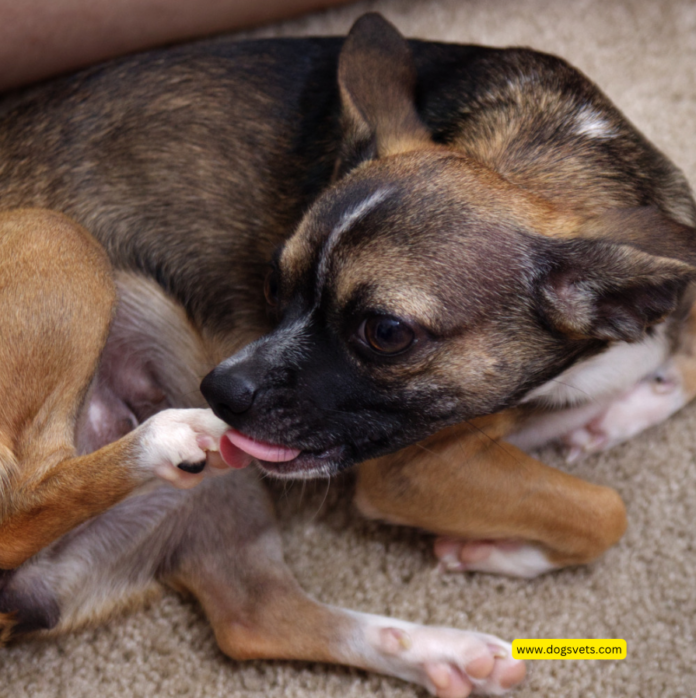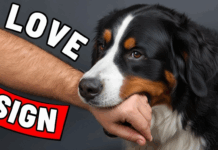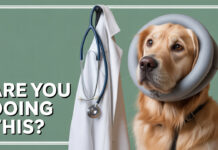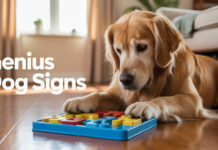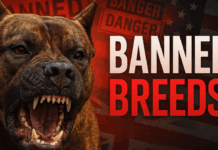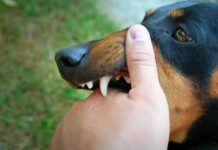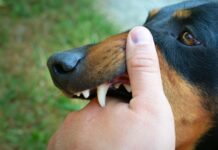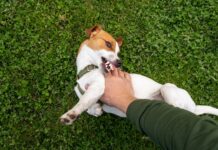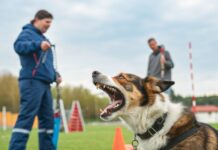Last Updated on September 20, 2024 by Dogs Vets
Introduction to Why Dogs Lick and Chew Their Paws
Dogs exhibit paw licking and chewing for a variety of reasons, ranging from simple grooming habits to more serious health issues. While occasional paw licking is normal, excessive licking and chewing can indicate underlying problems that require attention.
Understanding why your dog engages in this behavior is crucial for maintaining their overall health and well-being. In this article, we’ll delve into the most common causes of paw licking and chewing in dogs and explore effective solutions to address these behaviors.
Common Reasons Dogs Lick Their Paws
Paw licking is a natural behavior for dogs, serving purposes such as exploration, self-soothing, and cleaning. However, when this behavior becomes excessive, it can lead to self-inflicted harm and signal underlying health issues. Here are the primary reasons why dogs might excessively lick and chew their paws:
Injuries and General Pain
Injuries or General Pain can cause dogs to lick and chew their paws more frequently. Signs of pain or injury include limping, avoiding stairs, and decreased activity. Common sources of pain that may lead to paw licking include:
- Stings: Look for embedded stingers, which can cause allergic reactions and require immediate removal.
- Cuts and Scrapes: Small injuries can prompt dogs to lick their paws to clean the wound.
- Ingrown or Broken Nails: These can cause significant discomfort, leading to excessive licking.
- Dry, Cracked Paw Pads: Dryness can be painful and itchy, encouraging licking.
- Fractures: Broken bones in the paws or legs can cause persistent pain.
- Paw Pad Burns: Hot surfaces or exposure to winter chemicals can burn a dog’s paw pads.
Reference: American Kennel Club – Dog Paw Health
Parasites: Fleas and Ticks
Fleas and Ticks are common parasites that cause itching and discomfort, leading dogs to lick and chew their paws excessively. These pests thrive in environments where dogs frequent, such as bedding, carpets, and outdoor areas. Signs of flea and tick infestations include:
- Fleas: Small moving insects on the skin and black flea dirt particles.
- Ticks: Typically found between toes, under legs, and behind ears.
Reference: PetMD – Flea and Tick Prevention
Prevention and Treatment:
- Regular Inspections: Check your dog regularly for fleas and ticks.
- Preventative Medications: Consult your veterinarian for suitable flea and tick preventatives.
- Proper Removal: Use tweezers or a tick removal tool to safely remove ticks.
Allergies and Skin Irritations
Allergies are a significant cause of paw licking and chewing in dogs. Allergic reactions can originate from various sources, including:
- Food Allergies: Common allergens include proteins like chicken, beef, and eggs.
- Environmental Allergies: Pollen, grass, and dust mites can trigger allergic responses.
- Contact Allergies: Household products like detergents and cleaning agents may irritate a dog’s skin.
- Flea Allergies: An allergic reaction to flea saliva can cause intense itching.
Reference: VCA Hospitals – Canine Allergies
Managing Allergies:
- Identify and Eliminate Allergens: Work with your vet to pinpoint and remove the allergen.
- Medications: Use antihistamines, corticosteroids, or allergy-specific treatments as prescribed.
- Topical Treatments: Medicated shampoos and creams can soothe irritated skin.
- Dietary Changes: Switch to hypoallergenic diets if food allergies are suspected.
Arthritis and Joint Pain
Arthritis is a common condition in older dogs that can lead to discomfort and increased paw licking. This progressive disease affects joint cartilage, causing pain and inflammation. Symptoms include:
- Stiffness and Reduced Mobility: Difficulty in walking, getting up, or climbing stairs.
- Limping: Favoring one leg over another due to pain.
- Decreased Activity Levels: Less interest in exercise and play.
Reference: RSPCA – Arthritis in Dogs
Managing Arthritis:
- Environmental Modifications: Use non-slip rugs, provide orthopedic beds, and restrict access to stairs.
- Dietary Supplements: Glucosamine and chondroitin supplements can support joint health.
- Weight Management: Maintain a healthy weight to reduce stress on joints.
- Medications: Anti-inflammatory drugs and pain relievers as prescribed by your vet.
- Physical Therapy: Gentle exercises and physical therapy can improve mobility and reduce pain.
Behavioral Issues and Mental Health
Behavioral Issues such as anxiety, boredom, and obsessive-compulsive disorder (OCD) can cause dogs to lick and chew their paws excessively. These behaviors may persist even after addressing medical conditions like allergies or infections. Common behavioral triggers include:
- Stress and Anxiety: Changes in the household or environment can increase stress levels.
- Boredom: Lack of mental stimulation can lead to repetitive behaviors.
- Habit Formation: Continuous licking can become a self-soothing habit.
Reference: ASPCA – Canine Behavioral Problems
Addressing Behavioral Issues:
- Increase Mental Stimulation: Provide puzzle toys and engage in interactive play.
- Regular Exercise: Ensure your dog gets adequate physical activity.
- Behavioral Training: Consult a professional trainer or veterinary behaviorist.
- Calming Aids: Use anxiety-relief products like calming collars or supplements as recommended by your vet.
Working with Your Veterinarian to Treat the Issue
If your dog is excessively licking and chewing their paws, it’s essential to consult with your veterinarian to determine the underlying cause and appropriate treatment. When to See a Vet:
- Bleeding or Swelling: Visible signs of injury or infection.
- Persistent Limping: Indicates ongoing pain or discomfort.
- Pus or Discharge: Signs of infection requiring medical attention.
- Whimpering or Crying Out: Indicates severe pain when touched.
Veterinarian’s Role:
- Diagnosis: Identify the root cause through physical examinations and diagnostic tests.
- Treatment Plans: Develop a comprehensive treatment plan tailored to your dog’s specific needs.
- Follow-Up Care: Monitor your dog’s progress and adjust treatments as necessary.
Reference: American Veterinary Medical Association – Dog Health
Conclusion
Excessive paw licking and chewing in dogs can stem from a variety of causes, including injuries, parasites, allergies, arthritis, and behavioral issues. Recognizing the signs early and seeking veterinary advice is crucial for addressing these behaviors effectively. By understanding the underlying reasons and implementing appropriate solutions, you can ensure your dog remains happy, healthy, and comfortable. Always prioritize regular veterinary check-ups and maintain a proactive approach to your dog’s health and well-being.
